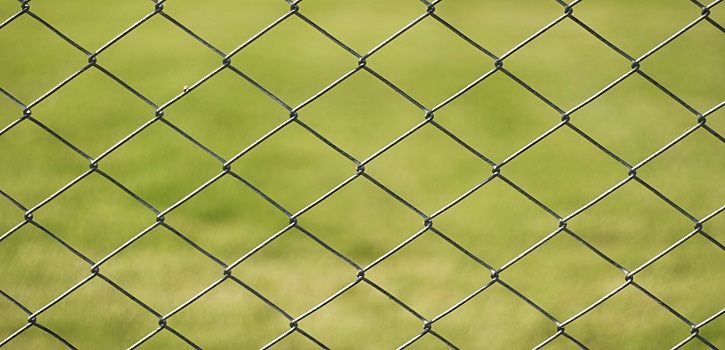As a property owner, you might have a lot of issues that can keep you awake at night. But access control to your property shouldn't have to be one of them. Chain link fences are a very useful option for different locations such as play grounds, back yards, sports field and industrial areas. Although these fences are not as appealing as wood, vinyl or aluminum fences, they provide much more utility than any other fence at a very affordable price. Here's a detailed illustration of all the essential factors involved at different stages of chain link fences that everyone should know.
Supplies Required for Installation Installing a chain link fence requires a variety of materials in order to complete the installation on time without any trouble. Here is a list of materials you need in hand.
- Tie Wire It's required to secure the wire mesh to the line post in a chain link fence. Tie wire keeps the wire mesh from pulling away from line posts.
- Premixed Cements Cement is poured inside the holes of the ground which are dug for posts. When it dries, it provides support to line and terminal posts that support the wire mesh.
- Fence Mesh This fence mesh is actually your chain link fence. It's the part of the fence that's woven with steel to provide the primary base for your fence.
- Terminal(Corner Post) This is required to install at the corner of the chain link fence. These are normally 2 to 3 inches in diameter and made of galvanized steel.
- Line Posts These are similar to terminal posts but installed at an interval of 5 to 6 feet between terminal posts. Line posts are usually few inches shorter than terminal posts and thin as well.
- Tension Bar Flat pieces of galvanized steel usually attached to terminal posts are known as tension bars. These bars run parallel to terminal post and are attached with tension bands. These bars are fed through wire mesh where mesh meets the terminal post.
- Rail Caps These caps are used to secure the top rail of corner and posts. These are basically of two types. One that connects to the top of line post is inserted on top of post itself. The other one is attached to the corner post. It has rings that slide down and this cap is angled at 90 degree so the top can be inserted.
- Top Rail The railing along the top of wire mesh is known as top rail.
- Tension Wire The wire pulled through wire mesh at ground level in order to keep the wires tight is termed as tension wire.
- Tension Bands These bands are used to connect the corner post and tension bar. These bands can be tightened to increase the tension of wire mesh.
- Post Caps Post caps cover the corner post to keep the rain from falling into the post.
Installation of Chain Link Fences Chain link fences are also known as hurricane or cyclone fencing because of their durability and ability to withstand strong wind force. Chain link fences are made of woven, inter-locking steel wires. The reason for their stability is steel posts that are cemented deep inside the earth before attaching fencing material. Chain link fence installation with secured access points is an economical way to guard the perimeter of your property.
Benefits of Chain Link Fence Installation There are many important factors that we look when we are selecting a fence. Budget, aesthetic appeal and proper security are some of those typical benefits. Apart from these usual benefits, here are some other advantages of chain link fencing:
- Affordable Pricing Comparatively lower cost than any other fencing option but with better visibility and similar strength makes chain link fence an appealing option to many home and business owners.
- Ease of Maintenance Chain link fences are very easy to maintain, you can use soap and water to clean off the debris. There's no need to paint these fences until unless you want colored fences. Apart from this, there's nothing much you need to do to keep it looking good.
- Durability Chain link fences are made of galvanized steel that gives them the ability to withstand severe weather conditions and day-to-day activities. You can even coat or paint them with different shades. This will increase their longevity as it will protect the fence from direct sun exposure and snowflakes.
- Variety of Design Options Available There's a misconception that chain link fences are installed only in gray color. But nowadays, it's not just an affordable fencing material; it can be customized in wide range of color, height and styles. The wire with which it's made can also be selected according to your preferred thickness to create a unique look.
Maintenance Tips for Chain Link Fences These fences are well known for their durability and resilient, low maintenance nature. Though they require low maintenance, they need proper care to increase their durability and effectiveness. For properly maintaining your chain link fence, you need to be aware of the type and structure of your fence as each type of fence requires different maintenance. All these factors make chain link fencing a preferred choice for your property.


